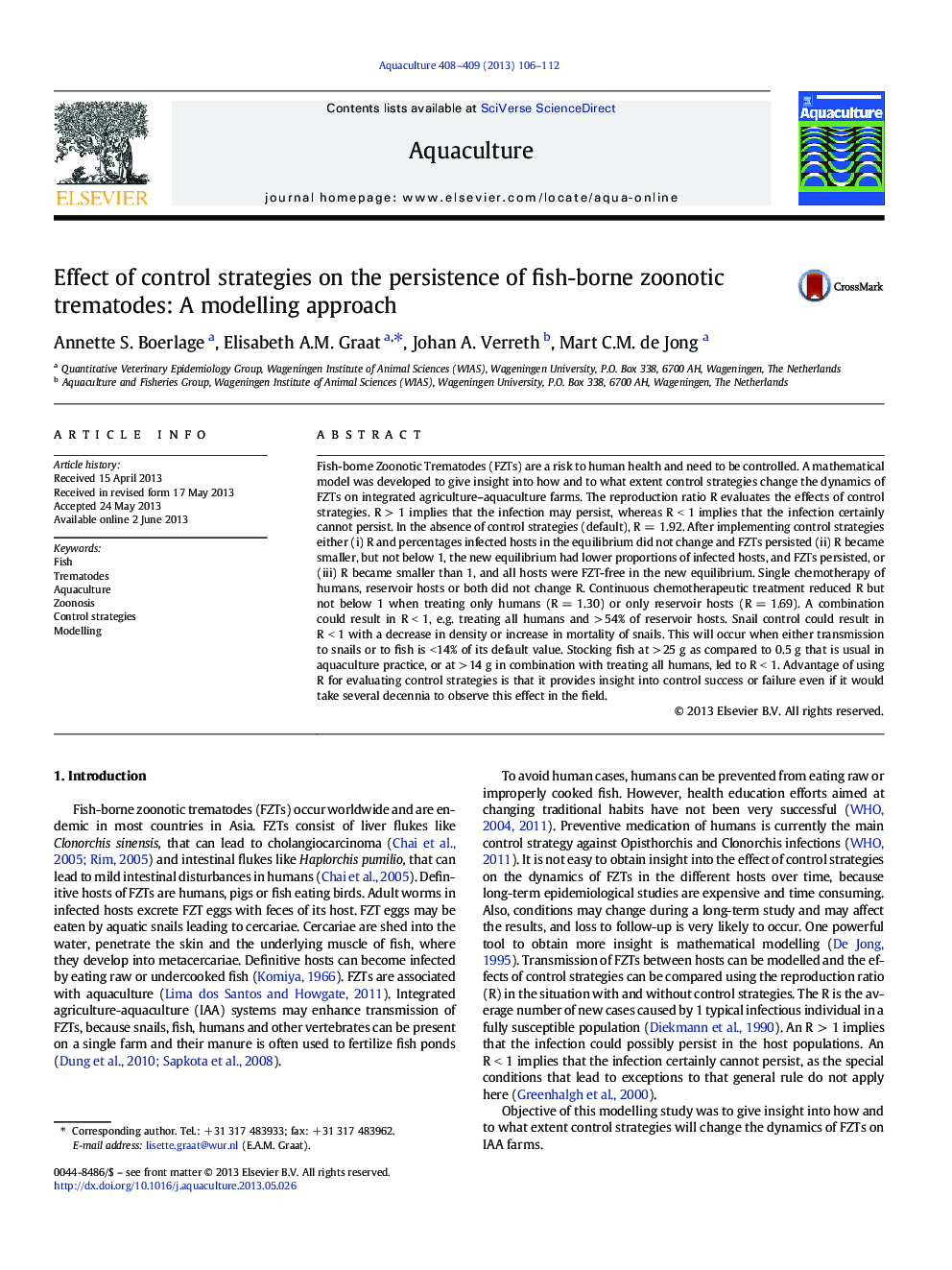| Article ID | Journal | Published Year | Pages | File Type |
|---|---|---|---|---|
| 8495544 | Aquaculture | 2013 | 7 Pages |
Abstract
Fish-borne Zoonotic Trematodes (FZTs) are a risk to human health and need to be controlled. A mathematical model was developed to give insight into how and to what extent control strategies change the dynamics of FZTs on integrated agriculture-aquaculture farms. The reproduction ratio R evaluates the effects of control strategies. RÂ >Â 1 implies that the infection may persist, whereas RÂ <Â 1 implies that the infection certainly cannot persist. In the absence of control strategies (default), RÂ =Â 1.92. After implementing control strategies either (i) R and percentages infected hosts in the equilibrium did not change and FZTs persisted (ii) R became smaller, but not below 1, the new equilibrium had lower proportions of infected hosts, and FZTs persisted, or (iii) R became smaller than 1, and all hosts were FZT-free in the new equilibrium. Single chemotherapy of humans, reservoir hosts or both did not change R. Continuous chemotherapeutic treatment reduced R but not below 1 when treating only humans (RÂ =Â 1.30) or only reservoir hosts (RÂ =Â 1.69). A combination could result in RÂ <Â 1, e.g. treating all humans and >Â 54% of reservoir hosts. Snail control could result in RÂ <Â 1 with a decrease in density or increase in mortality of snails. This will occur when either transmission to snails or to fish is <Â 14% of its default value. Stocking fish at >Â 25Â g as compared to 0.5Â g that is usual in aquaculture practice, or at >Â 14Â g in combination with treating all humans, led to RÂ <Â 1. Advantage of using R for evaluating control strategies is that it provides insight into control success or failure even if it would take several decennia to observe this effect in the field.
Related Topics
Life Sciences
Agricultural and Biological Sciences
Aquatic Science
Authors
Annette S. Boerlage, Elisabeth A.M. Graat, Johan A. Verreth, Mart C.M. de Jong,
